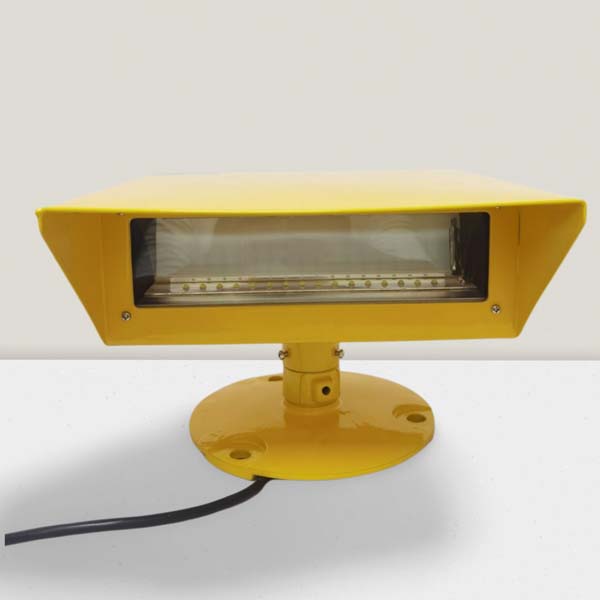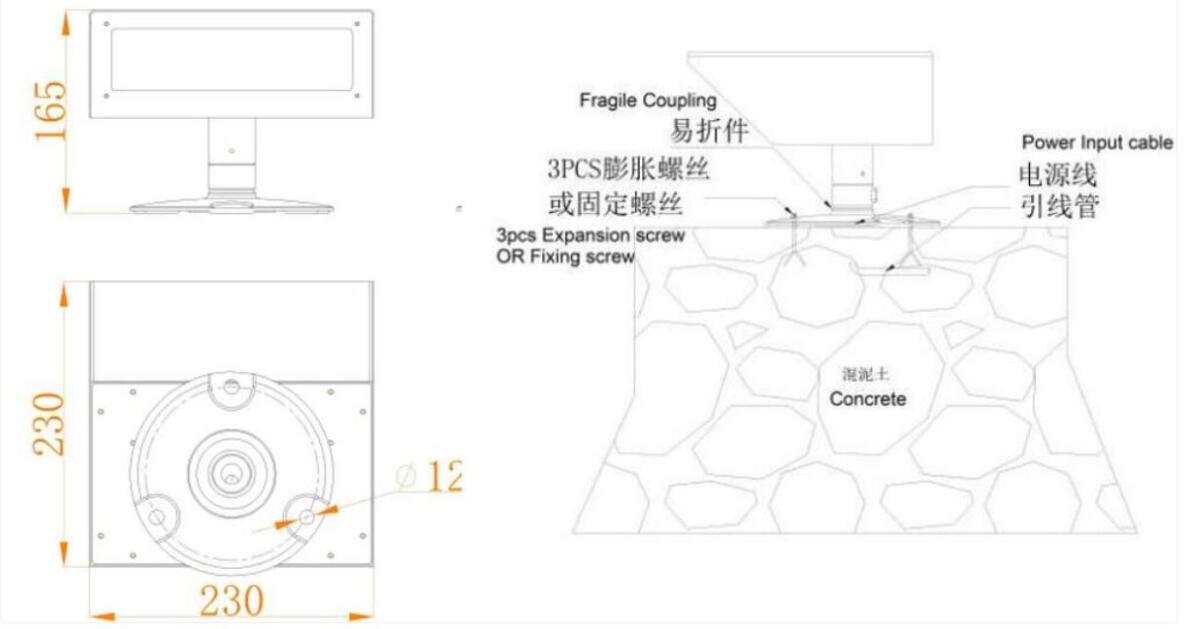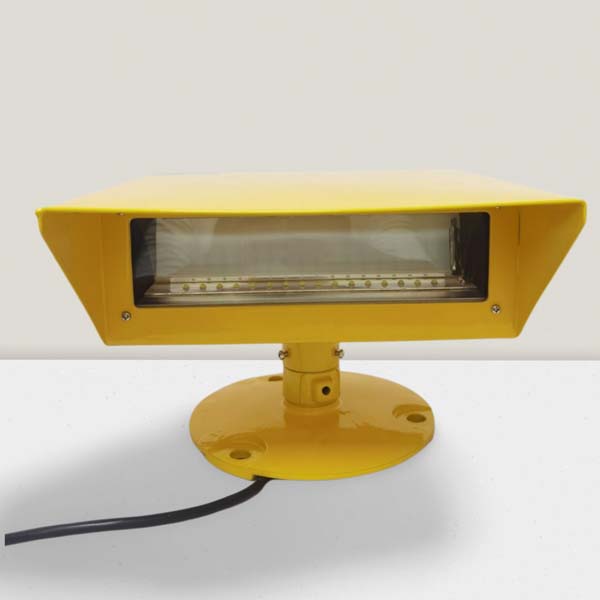
Detailed introduction
Heliport lighting, including helipad flood lights and heliport flood lights, is of crucial importance for safe helicopter operations.
These lights are designed to provide optimal illumination on the helipad and heliport areas. The helipad flood lights are strategically placed to ensure clear visibility during both day and night. They are powerful enough to light up a large area, enabling pilots to see the landing zone and surrounding obstacles clearly.
Heliport flood lights enhance the overall safety of the heliport by illuminating the approach paths, taxiways, and other critical areas. They help pilots navigate safely and avoid potential hazards.
The lights are typically made of high-quality materials that are resistant to harsh weather conditions, including wind, rain, and extreme temperatures. They are also designed to be energy-efficient, reducing operational costs and environmental impact.
In addition to providing illumination, heliport lighting can also serve as a visual aid for navigation. Different colors and flashing patterns can be used to indicate specific areas or signal important information to pilots.
Heliport lighting is an essential component of heliport infrastructure, ensuring the safety and efficiency of helicopter operations.

Overview:
The AO-HP-F2 helipad flood lights are employed to illuminate helidecks and serve as heliport lighting during the night. Specially crafted for helipads, these lights offer glare-free and uniform surface illumination for landing and loading operations. The LED surface floodlights enhance pilot depth perception by reflecting off the surface of the helipad, enabling pilots to more accurately estimate their altitude during landing.
The helideck floodlight is utilized in conjunction with other types of heliport lighting products, such as heliport TLOF lights, FATO lights, heliport aiming point lights, and more. Heliport lighting helipad flood lights heliport flood light helipad flood light.
Compliance:
1. ICAO Annex 14 Volume II Heliports 5.3.
2. FAA AC 150/5390-2B Heliport Design Guide
Features:
1. Utilize super bright LEDs with high lumen output while consuming less energy.
2. The input voltage can be either DC (ranging from 12 to 48 volts DC) or AC (100 to 265 volts AC at 50 to 60 hertz).
3. The enclosure is constructed from stainless steel and coated with powder in an electrostatic field, ensuring excellent weather resistance.
4. The tilt angle of the luminaire can be easily adjusted to maximize heliport illumination. An efficient photometric design offers excellent light distribution, ensuring compliance with ICAO and FAA requirements.
5. The assembly has a low profile of less than 25 centimeters and is mounted at frangible points.
6. The fragile coupling effectively reduces secondary damage to helicopters.
Specification:
|
Product Name |
Heliport lighting helipad flood lights heliport flood light helipad flood light AO-HP-F2 |
|
Mode NO.: |
AO-HP-F2 |
|
Color: |
White |
|
Light source:
|
LEDs |
|
luminous efficiency: |
>120lm/w |
|
Beam Angle: |
30 * 60 degree |
|
Installation type: |
Elevated (surface installation) |
|
Flashing Characteristics:
|
Fixed light
|
|
Operation Mode: |
24 hours after power on |
|
Input: |
100-240VAC 50-60Hz, 12-48VDC(Details contact us) |
|
Power Consumption(W): |
Average Power consumption 10W |
|
Circuit Protection: |
Integrated |
|
Helipad Light Material: |
reflector , stainless steel powder coated body. |
|
Weight(kg): |
2.4kg |
|
IP Grade: |
IP66 |
|
Work environment: |
-50℃~+60℃, Humidity 0%-100% |
|
Optional functions(Separate charges): |
1. VHF pilot to ground remote control 2. Infra-Red (IR) light for NVG |
Dimension & Installation:

Applications:
Heliport lighting, including helipad flood lights and heliport flood lights, plays a crucial role in various applications and locations.
In urban areas, helipads on top of hospitals and corporate buildings rely on these lights. During emergencies, they enable rapid medical evacuations and transportation of important personnel. The bright flood lights ensure clear visibility for pilots even in the midst of city lights and potential obstructions.
Offshore oil rigs are another important location. Helicopters are often used for transporting workers and supplies. The heliport flood lights help pilots navigate safely in the challenging marine environment, with strong winds and potentially poor visibility. They illuminate the helipad for safe landings and takeoffs.
At military bases, heliport lighting is essential for tactical operations. It allows for quick deployment and extraction of troops and equipment. The flood lights can be adjusted to different intensities and colors for specific missions.
In remote areas such as mountainous regions or wilderness locations, helipads are used for search and rescue operations. The helipad flood lights guide rescue helicopters to the right location, ensuring the safety of those in need. They also help in transporting supplies and medical teams.
Heliport lighting is indispensable in a wide range of locations, ensuring the safety and efficiency of helicopter operations.

